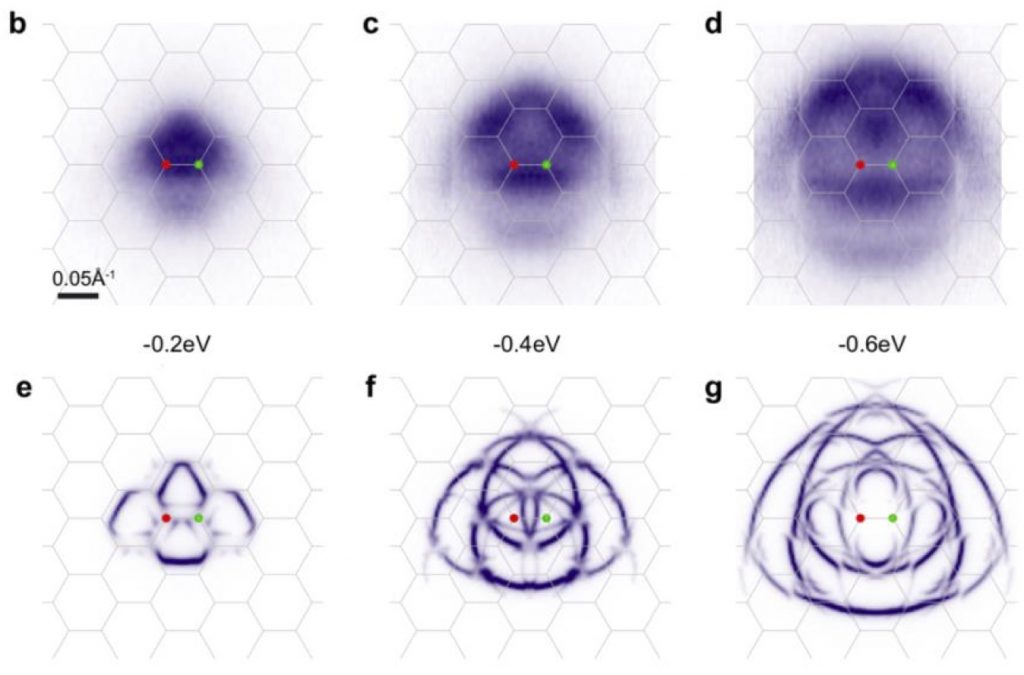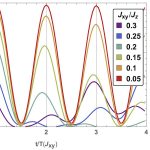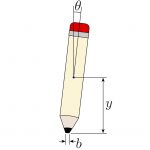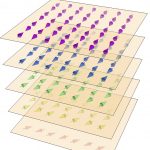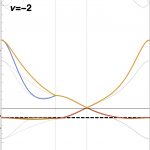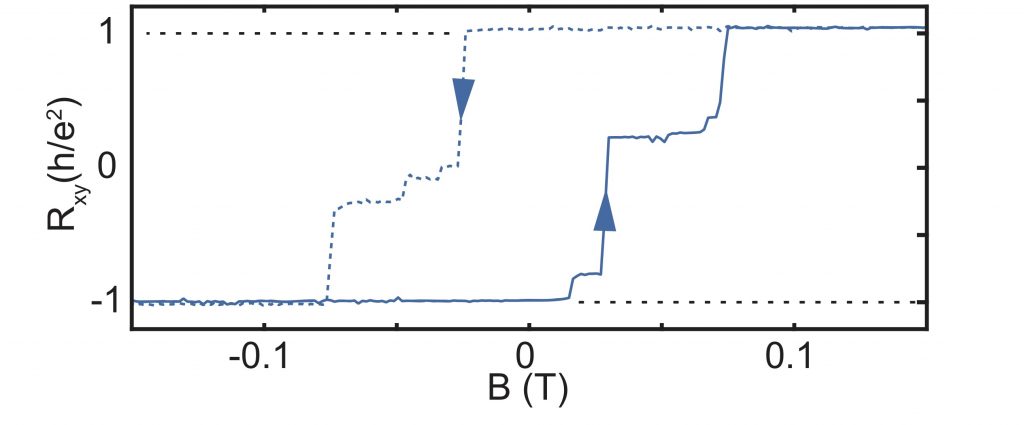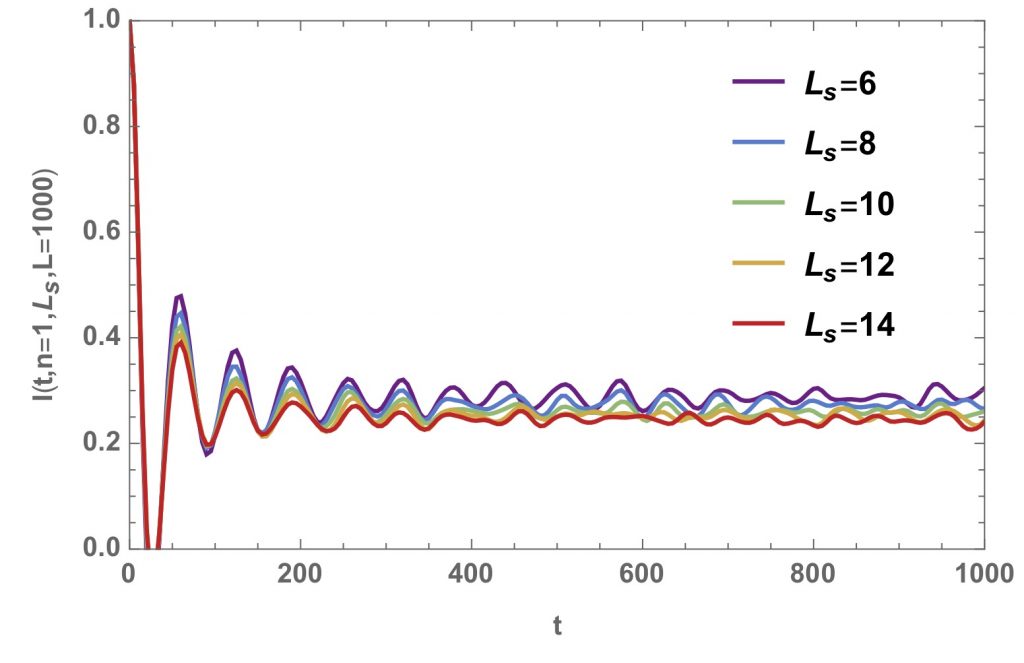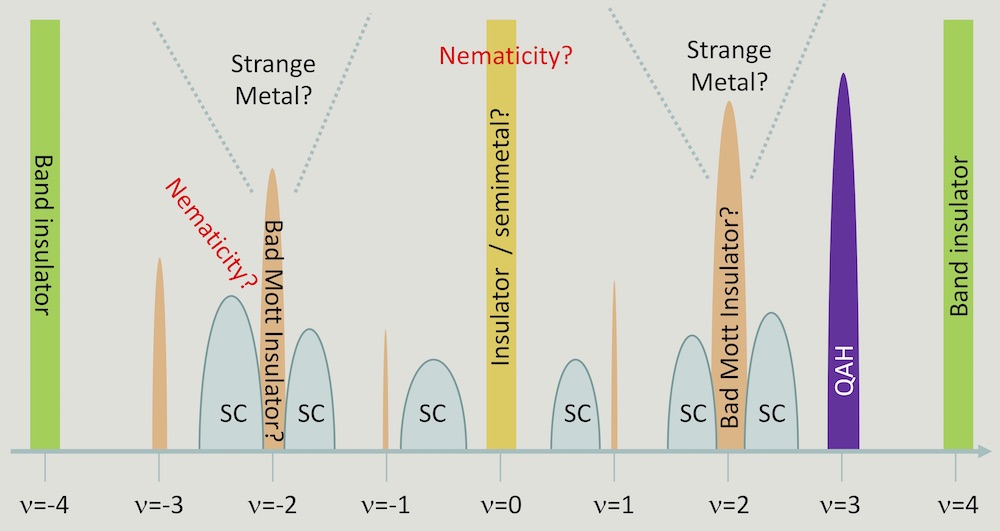
We have been working on twisted monolayer bilayer graphene (tMBG) for a while when suddenly three groups put their experimental results last week on the arXiv (UCSB, Columbia, Manchester). So we had to rush writing up everything we had, and now you can read our postdictions about the quantum anomalous Hall effect in tMBG!
Title: Topological Flat Bands and Correlated States in Twisted Monolayer-Bilayer Graphene
Authors: Louk Rademaker, Ivan Protopopov, Dmitry Abanin
Abstract: Monolayer graphene placed with a twist on top of AB-stacked bilayer graphene hosts topological flat bands in a wide range of twist angles. The dispersion of these bands and gaps between them can be efficiently controlled by a perpendicular electric field, which induces topological transitions accompanied by changes of the Chern numbers. In the regime where the applied electric field induces gaps between the flat bands, we find a relatively uniform distribution of the Berry curvature. Consequently, interaction-induced valley- and/or spin-polarized states at integer filling factors are energetically favorable. In particular, we predict a quantum anomalous Hall state at filling factor ν=1 for a range of twist angles 1<θ<1.4. Furthermore, to characterize the response of the system to magnetic field, we computed the Hofstadter butterfly and the Wannier plot, which can be used to probe the dispersion and topology of the flat bands in this material.
Reference: arXiv:2004.14964


